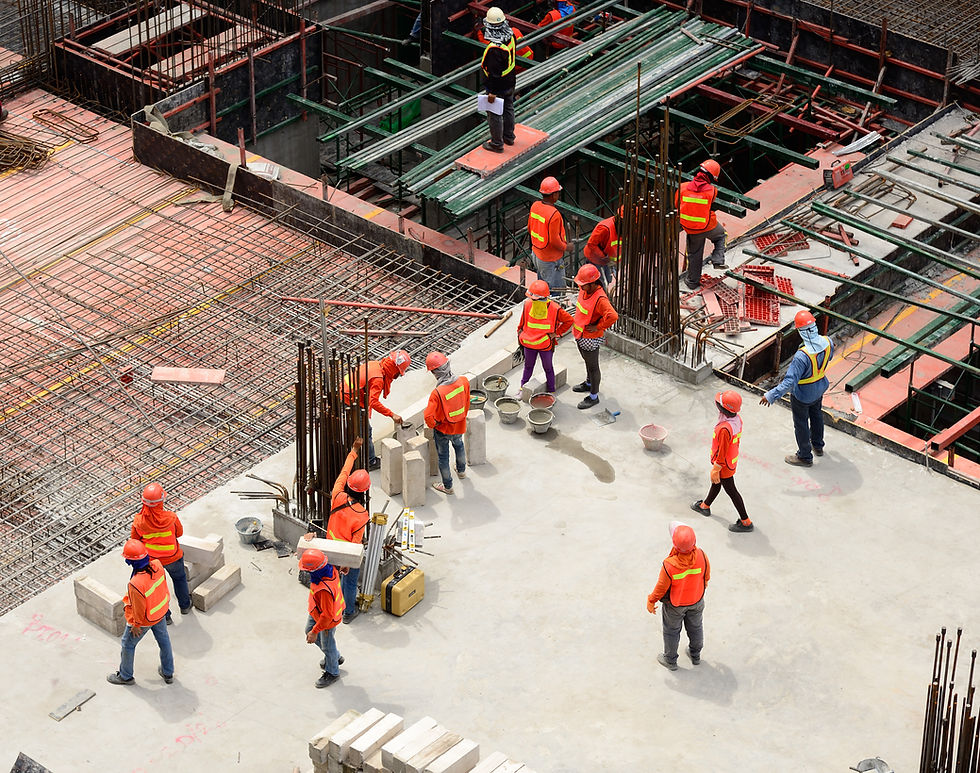The Power of Clash Detection in Modern Construction: Saving Time, Money, and Headaches
- mstoots
- Mar 25
- 3 min read

In the fast-paced world of construction, where timelines are tight and budgets are scrutinized, the smallest oversight can lead to costly delays or rework. Enter clash detection—a game-changing process powered by Building Information Modeling (BIM) that’s revolutionizing how we approach project coordination. At its core, clash detection identifies conflicts between different building systems before they become real-world problems, ensuring smoother execution and better outcomes. Here’s why it’s an indispensable tool for today’s construction professionals.
What is Clash Detection?
Imagine a scenario where a mechanical duct runs straight through a structural beam, or an electrical conduit clashes with plumbing lines. These are the kinds of conflicts—or “clashes”—that can derail a project if they’re only discovered during construction. Clash detection uses advanced BIM software, like Autodesk Navisworks, to analyze 3D models from all trades—architectural, structural, mechanical, electrical, and plumbing (MEP)—and flag potential interferences early in the design phase.
By simulating the entire building digitally, clash detection creates a virtual sandbox where issues can be spotted and resolved before a single worker steps on-site. It’s proactive problem-solving at its finest, turning what could be a chaotic construction process into a well-orchestrated symphony.
Why It Matters More Than Ever
In 2025, construction projects are more complex than ever. With sustainability goals pushing for tighter integration of systems and clients demanding faster delivery, there’s little room for error. Traditional 2D drawings often leave gaps in understanding how different elements interact, but BIM’s 3D environment closes those gaps. Clash detection takes it a step further by automating the identification of conflicts, saving countless hours that would otherwise be spent poring over plans manually.
The numbers speak for themselves. Studies have shown that rework due to design errors can account for up to 10% of a project’s cost. By catching clashes early, teams can reduce waste, avoid schedule overruns, and keep budgets in check. For example, resolving a duct-beam collision in the model might take a few hours of coordination, compared to days or weeks of on-site fixes—and that’s assuming the issue is even caught before it’s too late.
Real-World Impact
Let’s paint a picture: a multi-story commercial building is in the design phase. The HVAC team submits their model, the structural engineers provide theirs, and the electrical crew adds their conduit layouts. Without clash detection, these systems might look fine in isolation—but combine them, and chaos emerges. A critical support column could obstruct a planned ventilation route, forcing last-minute redesigns or, worse, compromising the building’s integrity.
With clash detection, these teams can collaborate in real time. The software highlights the conflict, and a coordination meeting resolves it—perhaps by rerouting the duct or adjusting the column’s placement. The result? Construction proceeds smoothly, deadlines are met, and the client gets a building that works as intended. It’s not just about avoiding mistakes; it’s about building smarter.
Taking It to the Next Level
Modern clash detection isn’t just about finding problems—it’s about fostering collaboration. Tools like Navisworks allow teams to generate detailed clash reports, complete with visualizations that make it easy for everyone, from engineers to contractors, to understand the issue. Some projects even integrate clash detection with virtual reality (VR), letting stakeholders “walk through” the model to see conflicts in context. This level of transparency ensures that every trade is on the same page, reducing miscommunication and boosting efficiency.
And it doesn’t stop at construction. As-built models updated with clash-free designs provide a reliable foundation for facility management, ensuring that future renovations or maintenance work start with accurate data. It’s a long-term investment in a building’s success.
The Future is Clash-Free
As the construction industry continues to embrace digital transformation, clash detection stands out as a cornerstone of effective project delivery. It’s a perfect blend of technology and teamwork, aligning the vision of designers with the realities of construction. For firms committed to precision and innovation, adopting robust clash detection workflows isn’t just an option—it’s a necessity.
At its heart, clash detection is about more than avoiding conflicts; it’s about creating harmony. By catching issues early, it empowers teams to focus on what they do best: building the spaces that shape our world. So, the next time you’re planning a project, ask yourself—why risk a clash when you can prevent it? The tools are here, and the benefits are clear. Let’s build smarter, together.



Comments